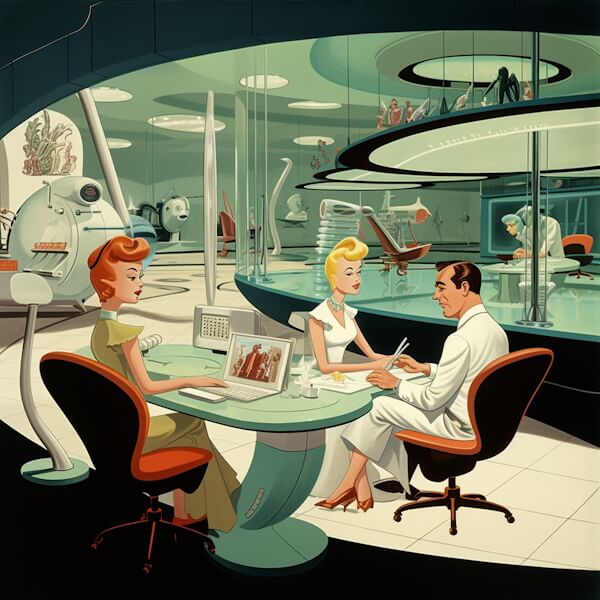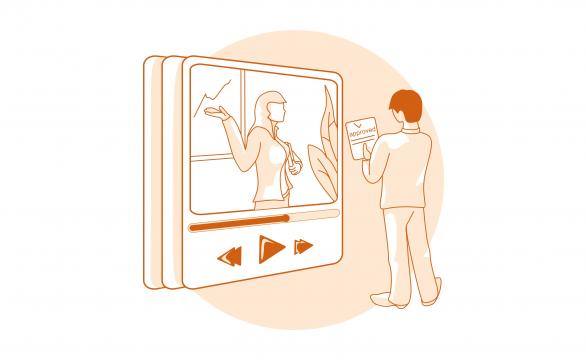
The dynamics of workforce demographics are undergoing substantial
transformation. Several underlying factors can be attributed to this change.
The prominent ones include globalization, rapid technological advancements, unprecedented medical progress, generational shifts, diversification, and evolving societal norms. The aging workforce of the Baby Boomer generation, now transitioning into retirement, and the increasing prevalence of millennials and zoomers in the labor force are significant demographic shifts.
Understanding and adapting to the changing workforce demographics trends is crucial for employers for several reasons.
Firstly, from a macro perspective, these changes impact the economy and society. It, therefore, becomes imperative for organizations to stay synchronized with these demographic changes and accordingly align their strategies. Failure to do so can negatively affect its standing in the marketplace and the broader community it serves.
From a business perspective, a diverse labor force brings together a wide range of talents, skill sets, and experience that can significantly fuel creativity and innovation and lead to problem-solving from a multidimensional viewpoint.
What are the Current Workforce Demographics?
The global workforce landscape continually evolves, driven by societal, economic, and technological factors. Currently, the workforce is incredibly diverse, spanning various ages, genders, and ethnicities. What exactly are the current workforce demographics? Let’s delve deeper into this intricate subject.
Statistics on Age, Gender, and Ethnicity of the Current Workforce 👶👧🏾👵
Our workers today consist of a unique blend of multiple generations – Baby Boomers, Generation X, Millennials, and Zoomers – each offering unique perspectives and skill sets. According to the Bureau of Labor Statistics, the median age of the workforce in the U.S. was 42.6 years as of 2020.
As of February 2023, there is a significant gender gap globally, with only 47 percent of all U.S. employees participating in the labor force. Ethnic diversity is also on the rise. 77 percent of the U.S. workforce is made up of white young people. Hispanic or Latina make up 18 percent, Black employed people make up 13 percent, and Asian people make up 7 percent of the workforce as of 2021.
Trends and Changes Observed in Recent Years 📈📉
Several key labor statistics trends have significantly reshaped the demographics of the global workforce in recent years. Millennials now represent the largest generation in the labor force, as most Baby Boomers have retired, and more Zoomers are getting employed.
More women are also entering the workforce, albeit at a slower rate, breaking traditional gender balance and norms. Technological advances and the surge in remote jobs due to the COVID-19 pandemic have drastically changed industry demands.
Impact of these Demographics on Organizations and Industries 👀
These shifting demographics are like a double-edged sword for organizations and industries.
On the one hand, a diverse workforce implies varied perspectives, fostering innovation and creativity. However, organizations must delicately handle generational and cultural differences to prevent conflicts and ensure team harmony.
Industries revolving around the physical labor market, like construction and manufacturing, may face challenges due to the aging workforce, which calls for innovative strategies like automation or increased immigration.
In conclusion, understanding the current workforce demographics trends is crucial for future workforce planning, policy-making, and organizational strategy.
Factors Contributing to Changing Workforce Demographics
Generational Shifts and the Rise of Millennials and Zoomers
The professional landscape is experiencing a significant shift with generational changes. The incumbency of Millennials and Zoomers is dramatically altering the contours of the workforce. These young people, also dubbed “digital natives,” are leveraging their tech-savviness to redefine how work gets done.
However, this doesn’t mean older generations are taking the back seat. Baby Boomers and Generation X professionals are still an integral part of the workers (despite being an aging workforce), offering invaluable experience and insights. The challenge lies in harmonizing these generational differences to nurture a productive environment.
Increased Focus on Diversity and Inclusion
Forward-looking organizations and employers understand that diverse teams foster innovation, creativity, and better decision-making. Hence, there’s a growing emphasis on diversity and inclusion. Organizations strive to cultivate workplaces accommodating different races, genders, abilities, and cultures.
Changing Attitudes Towards Work-Life Balance and Career Paths
The workforce today values a healthier work-life balance more than ever. Professionals seek more flexible hours, remote working capabilities, and an environment supporting mental health and well-being.
Moreover, traditional career paths are less attractive to today’s professionals who prefer a more individualistic and fulfilling journey.
Implications for Organizations
Demographic trends and diversity are among the most significant changes influencing the corporate world. This shift necessitates understanding the implications for organizations stemming from increasingly assorted workers.
That entails recognizing the need for inclusive workplaces, the benefits of a multi-generational workforce, and the potential conflicts arising from these diverse demographics.
- Inclusive workplaces foster a sense of belonging and mutual respect among everyone , regardless of their backgrounds. They embrace the differences individuals bring to the table, be it in terms of race, religion, gender, or age. Through this diversity, organizations portray a positive image, fostering goodwill, good mental health, and loyalty from employees and stakeholders alike, and they also equip themselves with multitudes of unique perspectives.
- Combining different generations within a single workforce can bring a wealth of benefits. Employed people from each era and other countries bring unique skills, perspectives, and work ethics, creating a synergetic blend that increases creativity, innovation, and problem-solving capabilities. It can significantly foster growth and push boundaries further.
- While diversity brings countless upsides, it can also unleash misunderstandings and conflicts due to generational differences or cultural misunderstandings. It’s the responsibility of the organization to manage such diversity effectively. Sensitivity training tools, open communication channels, and conflict resolution procedures can increasingly aid in addressing and minimizing such issues.
Strategies for Managing Changing Workforce Demographics
Adapting to the changing workforce demographics involves:
- Updating recruitment and hiring practices.
- Implementing diversity and inclusion initiatives.
- Creating flexible work arrangements.
- Presenting extensive career development opportunities.
-
Updating Recruitment and Hiring Practices
Modernizing your hiring strategy is of paramount importance in managing changing workforce demographics. Leaning towards digital recruitment platforms and social media channels, focusing on flexibility and diversity, can bring you a wide pool of talents.
Are your current recruitment platforms effectively targeting all demographics? Adopting a universal approach ensures a diverse mix of applicants from different generations, backgrounds, and skills - a key strategy in workforce management.
-
Implementing Diversity and Inclusion Initiatives
What value does having diversity and inclusion in the modern workplace bring? Fostering a diverse and inclusive environment enhances innovation and productivity in an era where workforce demographics are rapidly changing.
-
Creating Flexible Work Arrangements and Career Development Opportunities
Implementing flexible work arrangements and providing plentiful career development opportunities are pivotal to managing changing workforce demographics. With this approach, the appeal of a company extends beyond the conventional perks, enticing a broader ecosystem of potential employees.
Flexible working hours, remote working, career breaks, and part-time options can cater to a diverse range of workers, from millennials valuing work-life balance to older workers looking for less strenuous schedules. Continuous learning and development initiatives are highly sought after by today’s workers.
Providing these opportunities shows your commitment to your employee’s personal and professional growth - a great magnet for the future workforce.
Case Studies of Organizations Successfully Adapting
We’re highlighting three companies that have blazed a trail in this process. They demonstrate leveraging workforce diversity and managing demographic changes to become stronger and more competitive.
- Google. This tech giant is a perfect example of an organization embracing diversity. Have you ever wondered why Google consistently maintains its competitive edge? A significant part of their success can be attributed to their diverse workforce. Google recognizes that innovation and profitable creativity stem from a multifaceted pool of talent and ideas. The businesses encourage employees from diverse backgrounds, life experiences, and perspectives to propel innovative ideas that resonate with a global audience.
- Coca-Cola. With its global presence, it faces a legion of demographic changes that demand swift and seamless adaption. How does it succeed? It owes its success to its efficient demographic management strategies. The company pays meticulous attention to regional cultural differences. For every market they operate in, they ensure their brand message resonates with the local culture and tastes. By doing so, Coca-Cola has managed to become a beloved brand worldwide.
- IBM. This other tech powerhouse has always emphasized the importance of a diversified workforce. IBM’s commitment to diversity and inclusion dates back to the 1950s, long before it was a universal corporate expectation. The businesses’ ethos of welcoming diversity has served as a beacon for other organizations in the tech industry, proving that embracing workforce diversity can directly tie into business success.
Strategies for Managing Changing Demographics
After understanding how businesses can leverage diversity, the next natural question is: What strategies can be employed to manage changing demographics effectively? Here are a few key tactics:
- Understanding your evolving demographic is the first step. Regular labor market research allows you to gather insights into changing customer needs and preferences.
- In this fast-paced world, constant upskilling of employees is essential. Regular training in cultural competence can boost an organization’s ability to cater to diverse audiences.
- Encouraging diversity in the workplace starts at the top. Diverse leadership brings myriad perspectives and sets a positive example for the rest of the organization.
Challenges and considerations
Why is it that humans, despite their adaptability, tend to resist change so vehemently? The answer lies in our innate preference for safety and predictability.
Any modification is a wild card that disturbs the ‘known.’ Resistance from employees and leaders, driven primarily by fear and uncertainty, often ranks as the top cause of failed change initiatives. Addressing these fears and building a shared understanding is vital. But how can we accomplish this? Through open communication, assuaging fears, and aligning everyone with shared goals.
One could say that managing a multi-generational workforce is akin to pleasing everyone at a large family feast: you’re bound to find conflicting food preferences. Similarly, balancing the needs and expectations of different generations is challenging. Achieving this balance demands understanding and flexibility.
Understanding each generation’s unique characteristics, motivations, and communication styles contributes to a more inclusive environment. Flexibility allows for implementing diverse strategies that cater to different needs, effectively turning generational differences into strengths.
Conflicts and biases are ubiquitous in any organizational setup, especially during change. Unresolved conflicts and existing biases can hamper change efforts, creating a hostile environment that stifles growth.
So, how do we navigate this intricate maze of conflicts and biases? Active conflict resolution and fostering an inclusive, unbiased environment are a good start.
Overcoming Changing Workforce Demographics Challenges Using Playhunt
Traditional methods of attracting, hiring, and retaining talent by employers are growing stale, and new strategies need to be implemented.
So, how can organizations battle this and find the best talents these days? Here is where Playhunt comes into play, providing a dynamic and flexible solution for talent management.
The Playhunt Advantages
Playhunt is an innovative platform for employers and HRs that helps organizations find and retain top talents, regardless of changing workforce demographics. The platform has a versatile reach, accessing various talent pools across different age groups, skill levels, and industries.
Why is Playhunt the ideal solution for employers and job seekers? Let me throw light on it.
- Global Reach 🌍: Playhunt reaches out to a vast, unfiltered talent pool of different ages. It goes beyond local or regional restrictions and captures global talents.
- Diverse Skills 👥: Playhunt screens talents (both men and women) based on their diverse skill sets. It allows organizations to choose from an extensive range of skill sets and suit their requirements.
- Adaptive Platform 🦾: Playhunt is adaptable and effortlessly wearable for employers and employees. It aligns perfectly with different organizational structures and strategies.
Overcome the challenges of changing workforce demographics trends with Playhunt. Experience the difference of finding decent candidates even in these challenging times. Sign up for Playhunt and start addressing your talent management challenges effectively.








